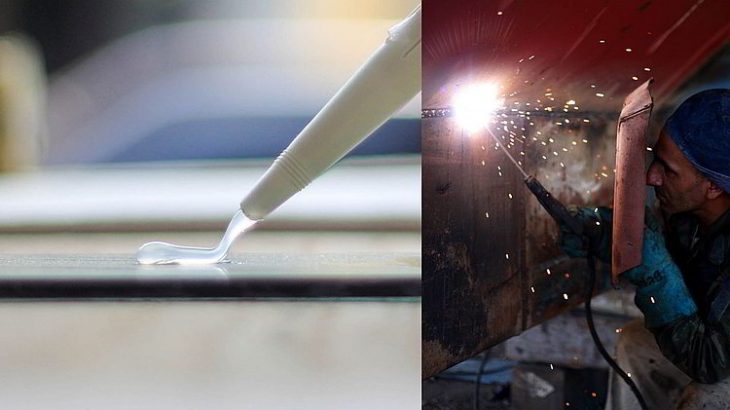In this article, CTA’s Managing Director Mark Plimmer shares his thoughts as an expert.
“Having spent nearly 20 years in the bonding industry, I have become somewhat of an expert in how to bond two substrates together to achieve the best results possible, with regards to strength, effectiveness and ease of application. Recently, I have noticed a shift, moving away from the more traditional methods of bonding. With confidence now building in this modern era, we can ensure reliable, lasting joint strength with industrial adhesives. Here are some of my thoughts and answers to some of the most common questions we see.”
What are the pros and cons of adhesive vs welding or traditional joining methods?
As you know, there are a variety of well-established means of joining two components together, including nuts and bolts, welding, rivets and screws. Here, I’ll focus on welding and compare it to using an adhesive (although we do supply a wide range of structural acrylic tapes and hook and loop tapes too).
Welding does not necessitate ‘curing’ time and is an instantaneous procedure whose component parts are generally not the subject of decay or shelf-life limitations. It does, however, require investment in some heavy-duty equipment, health & safety awareness and compliance, as well as likely training for the welders themselves. Welding will also require a period of preparation and tidy up, which will impact upon time and cost.
With adhesives, the danger is that the ‘mix’ can be misapplied. Adhesives are subject to shelf-life restrictions, but we consider this to be positive rather than a negative, as it ensures efficiency and effectiveness. Adhesives may be subject to environmental/temperature controls and attention must be paid to the correct surface preparation and bead length and density. However, adhesives DO banish the blight of unsightly fasteners or burnished metal, heat distortion and discolouration of joint. They can also reduce the likelihood of joint damage from vibration and can be viewed as a bonded gasket. Adhesives also have a broader application range as they can bond mixed substrates, materials of dissimilar thicknesses as well as wood, glass and plastics.
Adhesives also have the ability to eliminate stress concentration caused by spot welds, rivets, screws and other mechanical fasteners whilst maintaining surface integrity. Another big consideration is weight… the huge difference that the adhesive can make in this regard makes it such a viable solution for the aviation and automotive industries.
Finally, there is no risk of metal distortion or weakening due to weld heat when using adhesives.
Can you give me some examples of which industries are now using structural adhesives?
In short, everyone! New applications are being developed and tested daily. Reports from the agricultural industry show that workers are repairing metal fences using structural adhesives instead of welding. Marine industry manufacturers are bonding parts using structural adhesives in applications that require high resistance to chemicals like kerosene, hydrocarbon oil, mineral spirits, and ethylene glycol. The automotive industry is moving away from rivets in favour of structural adhesives due to a combination of corrosion resistance, stress relief and cost reduction. Aerospace engineers were among the earliest industries to adopt structural adhesives, mainly because adhesives can create seals that keep water out of metal fabrications while providing corrosion protection. The benefits of adhesive versus welding far outweigh the downfalls.
How do I make the change to adhesives?
All you need to do in the first instance is call to speak to myself (Mark) or Michelle at CTA to discuss your current welding or joining applications. Let us share our knowledge and expertise of how tapes and adhesives can be better and more cost-effective for you. When it’s time to change, you need the experts and here we are!
For more information call CTA on 0121 378 2909 to discuss your conversion from welding to adhesives or drop us your questions here

